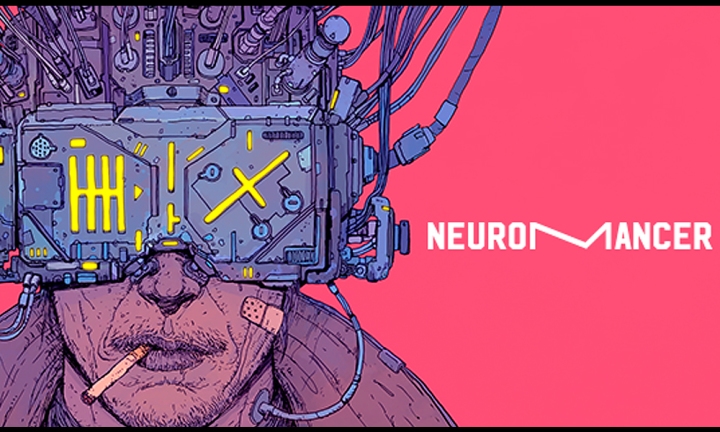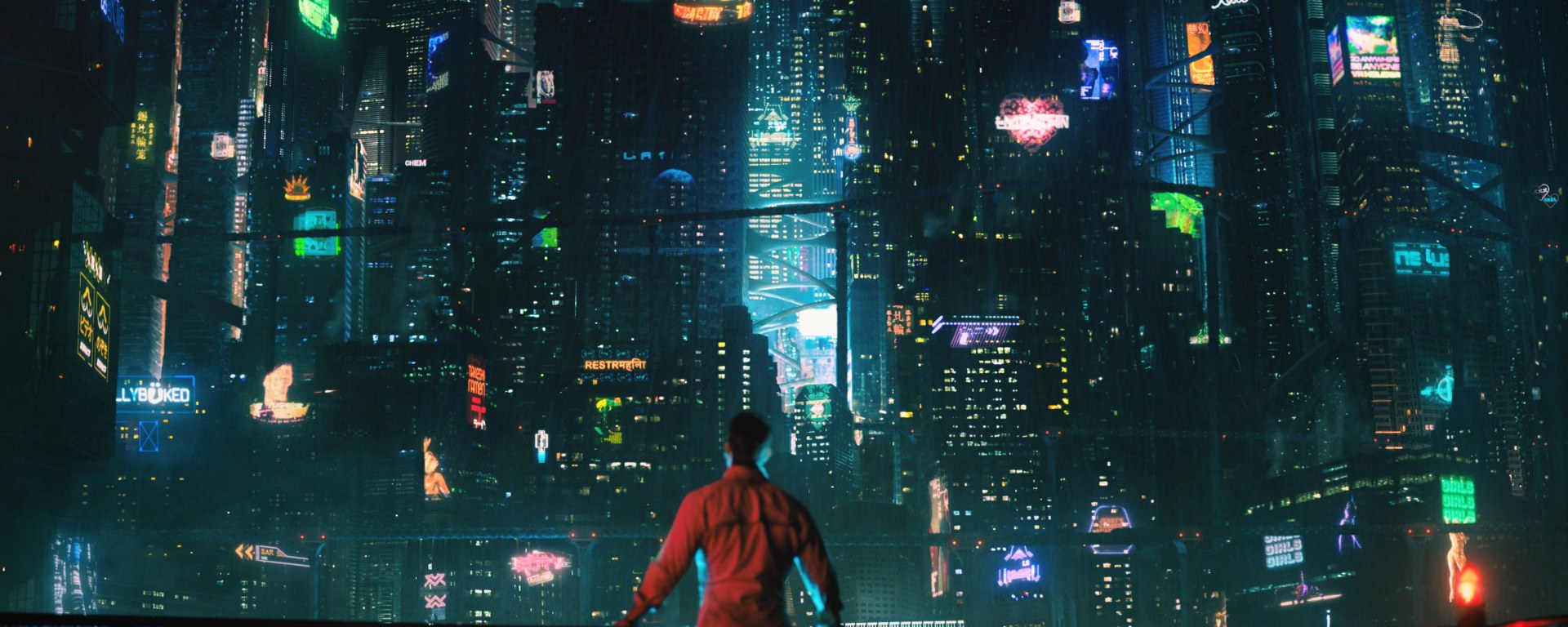CD Projekt Red has recently released 48 minutes of gameplay for their upcoming game Cyberpunk 2077. The footage, which was initially for behind closed doors purposes only, has taken the internet by storm with praise being heaped on the developers for their amazing vision as well as their transparency on the future of the game. The game boasts a massive open world full of futuristic tech and cityscapes, but for the uninitiated, the cyberpunk genre may look like a confusing collection of themes and styles. We’re here to help introduce you to the cyberpunk genre, as well as offer some suggestions to get you ready for the game.
Cyberpunk by definition “is a subgenre of science fiction in a futuristic setting that tends to focus on a ‘combination of lowlife and high tech'”. In other words, the worlds in a cyberpunk story feature incredibly advance cities and technology but feature dire political and social issues, crime, poverty and substance abuse that juxtapose against the shine of those technological advancements. So in many regards, a cyberpunk story is a variation of the dystopian setting. What sets it apart is how it embraces and draws inspiration from the punk and hacker subcultures.
Cyberpunk as a genre grew out of the sci-fi novels of the 1960s and 70s. Namely, the work of Philip K. Dick. He wrote a little book called Do Androids Sleep of Electric Sheep? which in turn would become the basis for the movie Blade Runner which introduced the genre to the mainstream. The novel featured a society living in a dystopian post-apocalyptic world and challenged the very essence of what it means to be human. The lead character, Deckard, hunts down Android Replicants for a living and “retires” them while questioning what he’s doing is right and even worth it.

Buy tickets to X-Men: Dark Phoenix on Atom Tickets! Save $5 at on your first purchase by using the promo code SQUAD at checkout.
The genre slowly built up from there, with novels like Johnny Mnemonic slowly gaining traction. That novel, written by William Gibson (more on him in a second), was about couriers carrying sensitive information in their minds. The novel would be adapted into a poorly received movie in 1995 starring Keanu Reeves. But the novel did enough to continue interest in the growing genre, which was quickly separating itself from its contemporaries.
As mentioned earlier, the movie Blade Runner came out and introduced many people to the concept of Cyberpunk. It was directed by Ridley Scott and while it was initially poorly received, it was since gone to become a cult film beloved by millions. In 2017, a sequel was released titled Blade Runner 2049. But the first film wasn’t the only dosage of near-future cities fans would get in 1982 as Akira would also be released in print and by 1989, Ghost in the Shell would be published, both of which would get adapted into incredibly popular and well-received anime films. But as I just mentioned, all this was simply the concept of “Cyberpunk”-the genre had yet to have a name attached to it. Writing about hacker countercultures, author Bruce Bethke coined the term in an article he wrote in 1980 for Amazing Stories, detailing the struggle of fighting computer-savvy teens who grew up on the computer and thus, were able to outsmart everyone else. The name of the piece was Cyberpunk and it stuck as the label for the growing subgenre.

[Credit: Warner Bros]
The genre only really got the legitimacy it has now in the 80s when American-Canadian author William Gibson released Neuromancer. Published in 1984, the novel was the first book in what would become the Sprawl trilogy and would go on to become the first book to win the Hugo Award, the Nebula Award and the Philip K. Dick award. The plot follows a has-been computer hacker named Case who is hired to do “one last job” for a powerful corporation. The action takes place in cyber Japan and features a collage of colourful characters, such as Molly-a street samurai or “razor girl”. She’s underdone extensive cybernetic enhancements, a typical trope in the genre where humans have augmented their bodies to reach new heights. This modification is usually at odds with religious groups and naturalists as it defies almost everything that makes us human. Thus the concept “more human than human” is applied and openly questioned.

Neuromancer
These concepts are brought up again in the works of Richard Morgan, specifically in the Altered Carbon book series and Netflix original, which features the wealthy 1% living high above the clouds and crime of the lower levels of the city. Those with the coin can essentially live on forever by taking their mind and downloading it. From there, they can load their mind into another body of their choosing. While the narrative doesn’t rely on virtual realities, it does question your own existence within reality when you no longer become “you”. Or, can you still be “you” when you’re no longer in the skin you were born in?
Neuromancer also introduced the concept of working and living in a virtual reality, not unlike what was seen in The Matrix years later. In fact, Case regularly accesses “the Matrix” in the novel until his terminals are trashed after he betrays his boss, locking him out of cyberspace. He can get his parts fixed, but only if he ends up working for some shady individuals. The idea of living a life in a virtual world, one that isn’t our own but designed by humans, is another common theme in the genre. The film The Matrix expands on this concept as those living in the virtual reality are in fact slaves, a not so subtle metaphor in 2018 perhaps? Those who are free from bondage are given the choice to be able to hack back into the Matrix, the world you and I see every day, in order to carry out their missions to free all those who are imprisoned.
So where does the punk element come from? Many of the antiheroes of the Cyberpunk genre are fighting-directly or indirectly-the establishment laid out before them. They may be anarchists or hackers, they may even be victims of the establishment. But they have a vested interest in working against society. The protagonists are usually at the bottom of the social ladder, living off of drugs and hacking computers for a living. They live outside the conventions of society, not unlike the punks of London and New York of the 1970s (minus the computer hacking). Authors like Gibson took that rebellious nature, living on the edge of desperation while refusing to join the shiny new tomorrow and stuck it into a science fiction setting.
The genre isn’t limited to books and films though. If you want to play Cyberpunk, there’s the precursor to the upcoming video game from Michael Pondsmith. The table top, pen and paper game Cyberpunk 2020 explores the various corporations and classes of a science fiction genre while the video games Deus Ex have some of the best cyberpunk stories available. The most recent entry, Mankind Divided, was released in 2016 and follows Interpol agent Adam Jensen, a heavily modified individual as he investigates a bombing in Prague. The game world doesn’t treat augmented people nicely and you yourself are regularly subject to screenings and segregation on the subway cars. The game frequently compares body modifications to that of the myth of Icarus, who flew too close to the sun.

Being screened in front of segregated washrooms [Credit: Eidos Montreal]
Cyberpunk 2077 seems to be capturing the very essence of the genre, from the neon-drenched Night City to the unprecedented violence running rampant through the streets, to the use of body augmentations on the main character V. The more V augments his or her body, the more of their humanity gets lost to the point where they may even cease to be known as human. Mega-corporations run the city, which is so violent and festering with crime that carrying weapons is not only legal but expected. Interestingly, the game has been shown off mainly in a sunny daytime setting, which goes against normal Cyberpunk conventions, which seems to prefer a nighttime setting to allow the neon glow to really pop. Sometimes rain is also used for effect, like in Blade Runner. Thankfully, the game promises a day and night cycle and a dynamic weather system so we will get to play in the rain at night time.
Are you enjoying our Cyberpunk 2077 coverage? Check out our thoughts and impressions on the game and how Night City compares to other Cyberpunk cities.

I am not sure if I waited for any other game like this game in my life but it turns out to be a disappointment and I ended up getting a refund like many others. Not sure, if I am getting back to this game anytime soon. May be, I will be playing the game after cyberpunk 2077 DLC will be released and I see most of the players playing the game on all platforms share something positive about the game.
LikeLike
I put it on the backburner for now, as I wrote my problems didn’t seem as bad as most but I’m holding out now for the patches in hopes of a superior experience. I have Tsushima, Mafia and Valhalla to tide me over until it’s (hopefully) fixed.
LikeLike